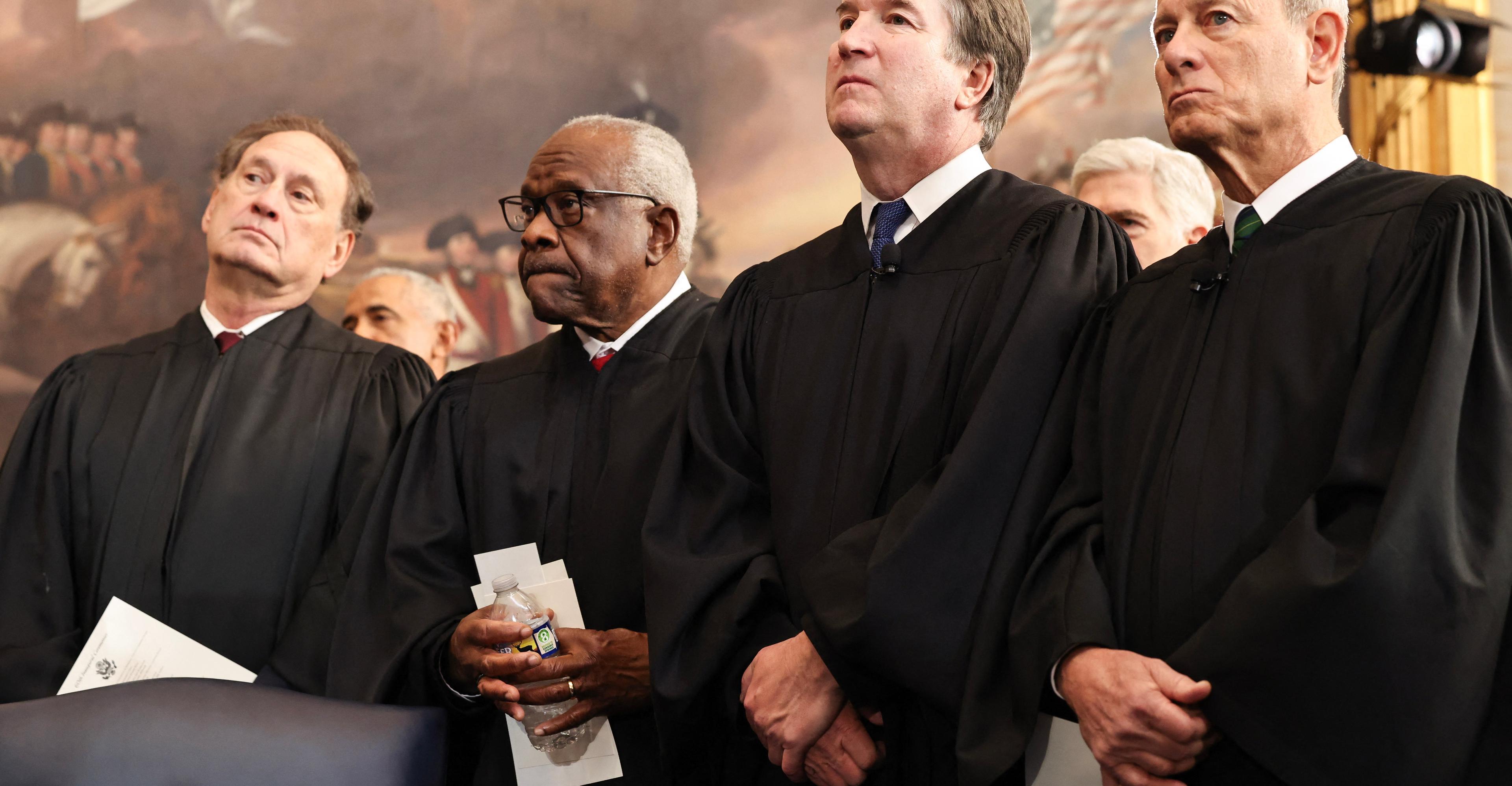How Florida became a conservative state — and why it will probably stay that way.


MIAMI — Carlos Campos came to Miami from Venezuela in 1979, before dictator Hugo Chávez’s socialist revolution brought about the unraveling of the oil-rich country. But it wasn’t until 2016 that Campos became actively engaged in US politics. Donald Trump’s “America First” message stirred something in him.
Sitting down at a Cuban restaurant just minutes from the Trump National Doral golf resort — one of the former president’s major Miami-area properties aside from his Mar-a-Lago estate — Campos described how he came to the realization that his values aligned more closely with Republicans than Democrats.
He attends Alpha & Omega, a Spanish-language evangelical church in Miami, and is anti-abortion. He wants stricter border policy, believing that the US isn’t doing enough to keep out criminals and that everyone should enter the country legally — despite the difficulties that even his fellow Venezuelans have recently experienced trying to immigrate. He supports a small government and a strong military. His children attend an evangelical private school because he didn’t want them to be “indoctrinated” with leftist ideas in public school, even though Republican Gov. Ron DeSantis signed first-of-their-kind laws cracking down on discussion of LGBTQ issues and race in the classroom.
And Campos believes Democrats are endangering fundamental rights to bear arms and to free speech, following the “same script” that led to the downfall of his home country.
“I see something bad happening here, and I can’t keep myself quiet,” said Campos, now an organizer for the Miami grassroots group Venezuelans for Trump. “If we don’t wake up, America is going to be another Cuba. This is the last war between socialism and democracy.”
He’s part of a growing share of Hispanic voters whose political and cultural views helped Republicans flip traditionally blue Miami-Dade County in 2022 and bring about a broader red wave that swept Florida that year. Those victories — along with Trump’s residency and DeSantis’s hardline policies — cemented Florida’s transition from a swing state to the center of the Republican universe. It was the seemingly inevitable conclusion of years-long Republican efforts to consolidate power, Democratic underinvestment, and shifting attitudes among once reliably blue voting blocs.
Whether it stays that way for the years to come has big consequences for both future presidential candidates pursuing the state’s 30 Electoral College votes and the nearly 22 million Floridians who are essentially living under one-party rule. For his part, Campos is betting that the era of Republican dominance in Florida has only begun.
“People are not blind,” said Campos. “And Democrats have not understood the problem.”
How Republicans engineered Florida’s red shift
It’s not just Campos: By the accounts of many Republicans and Democrats, Florida is indisputably a red state and seems likely to stay that way for the foreseeable future.
“There may be a day, which I doubt I will live to see, in which Florida will again be a blue state, but today, in the next election, and the election after that, it’s a red state,” said Mac Stipanovich, a former Florida GOP strategist who endorsed Joe Biden in 2020.
The last Democratic presidential candidate who won Florida was former President Barack Obama, squeaking by for a second time in 2012 thanks to strong Black turnout and support from Hispanic voters. Obama’s second victory hinged on a superior ground game that Democrats haven’t been able to replicate since — and that Republicans adopted as their own in battleground states, including Florida, following their post-election autopsy report that year.
![Obama, in dark slacks and a white shirt, stands at a podium surrounded by supporters, a group of whom hold aloft blue and red letters reading: “FL [heart symbol] Obama”.](https://cdn.vox-cdn.com/thumbor/ChaqVQGLpJbBhKfDzeYsWcYTSQM=/0x0:3000x1245/1200x0/filters:focal(0x0:3000x1245):no_upscale()/cdn.vox-cdn.com/uploads/chorus_asset/file/24915874/GettyImages_148775459.jpg)
Republicans control every partisan statewide office. The last time the state had a Democratic governor was in the 1990s. The closest Democrats have since come to winning the governorship was in 2018, when then-Tallahassee Mayor Andrew Gillum narrowly lost to DeSantis, a then-little-known Congress member who arguably rode Trump’s endorsement to victory. Former Florida Gov. Charlie Crist didn’t become a Democrat until 2012, after he left office, and lost by nearly 20 points to DeSantis when he sought a second term in 2022.
A favorable new electoral map from the 2020 redistricting cycle has further cemented Republican power in the state. In the new map, a key metric of partisan gerrymandering went from an approximately 5-point to more than 20-point Republican advantage. That metric, the efficiency gap, captures the difference in the shares of each party’s votes “wasted” — votes cast for candidates who lost or excess votes cast for a winning candidate.
In 2021, Republicans officially overtook Democrats in overall voter registrations: Republicans gained almost 700,000 voters while Democrats lost almost 132,000 between the beginning of 2018 and July of this year, according to data from the Florida Division of Elections.
The conservative renaissance has been a long time in the making.
In 2000, just 537 votes and a few hanging chads on Florida ballots came between a Democrat and a Republican in the White House in the closest election in American history. In the wake of that election, successive governors worked to remake the state. First, Republican Gov. Jeb Bush, now seen as a moderate, but known as one of the most conservative governors in America at the time he left office in 2007, advanced his “big, hairy audacious goals” on GOP priorities such as implementing school choice and eliminating affirmative action in the state. Then, Republican Gov. Rick Scott, now a US senator, put himself — and his state — at the forefront of the GOP resistance to the Obama administration as a vocal critic of the Affordable Care Act.
“Republicans are governing responsibly, and we’re winning elections because of it,” Scott told Vox. “Elected officials across the state, along with the Republican Party of Florida, have invested in building a grassroots operation to last. We register voters. We reach out to the Hispanic community. We spend time with voters across our state, not just in the months before the election, but all day every day.”
Trump and DeSantis finished the job. Trump, who once called Mar-a-Lago the “Winter White House” and became an official Florida resident during his presidency, conceived the MAGA philosophy that has come to define Florida’s politics and that of the national GOP. His onetime protégé DeSantis has made the state a pioneer in conservative policymaking. (Neither Trump’s nor DeSantis’s campaigns responded to requests for comment; the RNC and Florida Republican Party did not, either.)
:no_upscale()/cdn.vox-cdn.com/uploads/chorus_asset/file/24916681/AP18237660093437.jpg)
With a Republican supermajority in the state legislature, DeSantis signed a plethora of laws last session waging culture wars everywhere from the classroom to the bathroom to Disney World. That includes a ban on abortions after six weeks of pregnancy, before many people know they are pregnant; harsh penalties for parents and doctors who allow trans minors to pursue gender-affirming care; a crackdown on undocumented immigrant workers that is leading to labor shortages; and new restrictions on “woke” corporations that embrace progressive social justice policies.
As Miami-based Democratic pollster Fernand Amandi explains, together, DeSantis, Trump, and their right-wing policies serve as a “bat signal” to conservative voters in Florida and beyond.
Florida Republicans are energized and focused on growing their ranks
Florida is now a Republican haven, and migration trends have reflected that. The state ranks number one in the country in terms of total net migration and has for years. People have long been drawn there by affordability relative to other coastal cities and low taxes, with Scott crediting multiple rounds of tax cuts he made between 2011 and 2019 for attracting residents of high-tax states like New York. DeSantis’s lax pandemic policies were another major driver in the last few years.
“From quickly reopening schools to eliminating job-killing restrictions, Florida was the place where many Americans chose to visit, move to, and invest during the pandemic,” former Florida Republican Rep. Carlos Curbelo said. DeSantis’s “actions during one of the most challenging crises in human history accelerated Florida’s transition from purple to red.”
Recent waves of migration have certainly included Democrats, but Republicans have migrated in greater numbers. Between November 2018 and June 2023, about 653,000 voters who had been previously registered in another state moved to Florida and re-registered, according to a Vox analysis of data from the nonpartisan data vendor L2. About 45 percent of them registered as Republicans, while only about 24 percent registered as Democrats.
Compare that to Texas, another deeply red state to which Americans are moving in increasing numbers and where the registration gap between the parties was much closer over that period: About 48 percent of arrivals registered as Republicans, while about 41 percent registered as Democrats.
:no_upscale()/cdn.vox-cdn.com/uploads/chorus_asset/file/24878537/MWh7w_republicans_have_the_voter_registration_advantage_among_new_arrivals_to_florida_nbsp_.png)
William Frey, a demographer at Brookings, says the reliability of the GOP’s base is as important to understand as its size and growth. That’s because his research suggests Republican dominance in the state has less to do with migration than with the overperformance of Florida’s Republican-leaning voting blocs. Those groups — which include older, white, male, non-college-educated voters — are shrinking over time but are still sizable in Florida compared to other states and remain highly engaged.
Between 2020 and 2022, Republicans actually increased their margins significantly along those demographics: by 18 percentage points among Florida voters over the age of 45 and by 20 points among white men without a college education, according to Frey’s analysis. Their turnout rates, while slightly lower than the last midterm elections in 2018, were also significantly higher than historically Democratic-leaning groups such as Black, Hispanic, and young voters.
:no_upscale()/cdn.vox-cdn.com/uploads/chorus_asset/file/24888346/ZeqOn_florida_republicans_grew_their_advantage_among_key_demographics_in_2022__1_.png)
Existing voters appear as enthusiastic as ever under GOP leadership that is tailoring its message and policies to the base. It all adds up to one reality, according to Matt Terrill, former chief of staff to Florida Republican Sen. Marco Rubio: “Florida has been the heart and soul of the Republican Party for the past couple of years.”
Democrats are paying for deserting their voters in Florida
Republican control of Florida isn’t just due to the success of GOP strategies — Democrats in Florida have also ceded major ground to Republicans in recent years. It’s a truth Democrats in the state will readily admit. Nikki Fried, the new chair of the Florida Democratic Party, said that November 2022 marked the “complete collapse of the Democratic Party in the state”: “If we don’t realize that the problem is us, then we can’t move forward.”
Rep. Maxwell Frost, a Democrat from Orlando and the first member of Generation Z elected to Congress, discovered just how tall a task turning Florida blue might be during early voting in 2022. In a panicked Zoom call, he and other Central Florida leaders realized that their voters just weren’t showing up in the numbers they expected and the party’s complacency was to blame.
“When you build year-round, you don’t have to convince people at the last minute — you just have to remind them,” he told Vox.
Fried said the party dropped the ball on voter registration for the past couple of election cycles; Republicans registered 26 new voters, on net, for every Democrat between 2018 and 2022. Local and national Democrats lacked coordination, invested too little too late in ground game, and took certain communities for granted, including Hispanic and Black voters.
The party didn’t have a coherent message that spoke to voters’ basic concerns about inflation (which remains high in Florida despite abating nationally), housing costs, and the state’s property insurance crisis — issues that cut across party lines and demographics. Instead, they allowed Republicans to define the debate and focus on culture war issues.
“Florida has a very toxic political environment, which mainly consists of our opposition trying to frame us as people who we aren’t,” Frost said. “Someone says, ‘You’re a socialist,’ or, ‘You’re defunding the police.’ And we spend our whole media budget on a commercial that says, ‘No, I’m not.’ I’m not convinced that is a winning message in the state of Florida.”
:no_upscale()/cdn.vox-cdn.com/uploads/chorus_asset/file/24915905/GettyImages_1244091551.jpg)
It wasn’t just the message that was the problem in 2022: Many Democratic voters also just weren’t inspired by Democratic candidates and stayed home. Turnout was down 9 percent overall compared to the previous midterm cycle, and that hurt Democrats more than Republicans. There was energy behind Frost’s successful campaign, as well as that of Democrat Donna Deegan in the Jacksonville mayoral race against a DeSantis-endorsed candidate earlier this year. The party needs to do more to recruit compelling candidates, Frost said: “We have to build a pipeline, and the pipeline doesn’t really exist.”
The national party has also taken a step back from Florida. Unlike in smaller states like New Hampshire, where a guerrilla operation armed with limited resources can be successful, Democrats have to spend heavily in Florida to compete, let alone win. In 2018, a year that brought a blue tidal wave everywhere but Florida, the national party decided the state “was just not worth the squeeze,” Amandi said. “They’ve abandoned ship. It’s hard to blame them.”
That lack of support has a cascading effect on fundraising for Florida Democrats. Financial backing from the national party is a “signal to Democratic donors across the country that they should be giving, as well,” Fried said. In the absence of that backing, major donors have written off Florida as a battleground. The Florida Democratic Party only raised about $1.5 million in the first half of 2023, according to the latest available campaign finance reports filed with the Florida Division of Elections.
Republicans haven’t had the same money problems. The state Republican Party raised about $9.9 million in the first half of this year and has a track record of running candidates who have had the resources to self-fund: Scott, for instance, spent a record $64 million of his own fortune on his successful 2018 Senate campaign.
:no_upscale()/cdn.vox-cdn.com/uploads/chorus_asset/file/24888349/2zLtZ_florida_republicans_consistently_out_raised_state_democrats_since_the_2018_midterms_nbsp___4_.png)
Republicans have also been far more successful at tapping into Florida’s deep-pocketed donor network. DeSantis broke the fundraising record for any gubernatorial candidate in US history, raking in more than $217 million for his 2022 reelection bid. The state Republican Party and the House and Senate campaign committees reportedly spent another combined $80 million that year in Florida. By comparison, Crist, the Democratic gubernatorial candidate, and the state Democratic Party reportedly only spent a joint $45 million. The GOP also blew Democrats out of the water in spending in the 2016 Senate race and the 2020 presidential election, though Hillary Clinton significantly outspent Trump in 2016 and still lost.
It’s hard to look at those numbers and argue that the national party isn’t justified in turning its gaze to other states where it doesn’t have to make such a big gamble and compete with massive Republican resources.
Democratic voters are staying home — or leaving the party
Democrats have historically relied on driving up big margins among Black and Hispanic voters to win statewide in Florida. But Hispanic defections in South Florida in particular, as well as a significant drop in Black voter turnout last year, have undermined that strategy.
Hispanics aren’t a monolith anywhere in the US, but that’s especially true in South Florida, where politics can vary widely by generation, country of origin, and length of time spent in the US. Cubans and Venezuelans have historically skewed Republican and have powered GOP victories in the state for figures such as Jeb Bush. They veered further to the right in 2022, and that — in addition to growing support from Colombians and even Puerto Ricans who have historically leaned Democratic — helped DeSantis win a majority of the Latino vote overall in Florida, according to an NBC News exit poll.
:no_upscale()/cdn.vox-cdn.com/uploads/chorus_asset/file/24915936/GettyImages_1233982085.jpg)
Francisco Teira, a Cuban American living in West Miami, said he’s never voting for a Republican again after Trump, but he’s ended friendships over the MAGA movement. His friends liked that Trump was a “president with balls,” and they’re not alone in being drawn to his machismo. Ade Ferro, an organizer for Venezuelans for Biden in Miami, said an affinity for Trump’s leadership style is the “curse” of people who have been ruled by caudillos — strongmen military dictators particular to Latin America.
Octaviano Perez, a Venezuelan American living in the Kendall suburb of Miami who came to the US in 2014, will cast a ballot in an American presidential election for the first time next year after getting his citizenship. He isn’t sure who he will vote for, but he’s worried that the Democratic Party has gone too far left and is taking the US down a doomed path to socialism.
“In South Florida in particular, the perception that Democrats are soft on socialist dictators in the Americas is extremely damaging to the party’s brand,” Rep. Curbelo said.
That perception has sprouted from popular Spanish-language media, going largely unchallenged for years by Democratic voices. How deeply the phenomenon has permeated the community was clear on a July evening at Miami’s famed Versailles restaurant, a cherished landmark for the Cuban community where Trump made a stop following arraignment the month prior. Old men in Panama hats picked up cafecitos and local Spanish-language newspapers that heralded familiar themes: Diario Las Americas warned about the “magnitude of the penetration” of communist China in Latin America, and a South Press opinion writer called for new leadership in the US in 2024 that takes a hardline stance on communism.
:no_upscale()/cdn.vox-cdn.com/uploads/chorus_asset/file/24916619/GettyImages_1258668806.jpg)
Misinformation has also spread through WhatsApp group chats and on right-wing radio shows such as Americano Media. Marco Frieri, an activist for Colombianos Con Biden in Miami, has started appearing on such shows with the aim of providing a counterpoint. “We can’t just hide,” he said. “We have to be on these radio shows, counteracting the lies, or at least tell the people what our position is.”
There’s an argument that some Hispanic voters in South Florida just don’t have a natural cultural affinity with Democrats right now. Democrats are highlighting issues of racial discrimination, and many Florida Hispanic voters reject that as a “victimhood narrative that many Democrats attempt to assign to the community,” Curbelo said.
Though most US Latinos are Christian, not all support DeSantis’s six-week abortion ban or attacks on LGBTQ rights. They may want some restrictions on abortion, though, and to limit the extent to which LGBTQ issues are addressed in the classroom. “Some things should be discussed privately, with family,” said Tatiana, a Miami mother who asked to be identified only by her first name for personal privacy concerns.
“For now, Democrats are too far from Hispanic voters on cultural issues where reliable Hispanic voters are more conservative,” Curbelo said.
A recent drop-off in Black voter turnout has also eroded Democrats’ margins in the state. According to Frey’s analysis, Black voter turnout fell from almost 45 percent in 2014 and 49 percent in 2018 to about 42 percent in 2022, on par with the national average that year. The effect was particularly stark among Black voters under the age of 30, among whom turnout rates declined by 73 percent from 2020 to 2022, according to research by the progressive group Florida Watch. That might be due at least in part to a law limiting voters’ ability to automatically request a mail-in ballot and use ballot drop boxes just after Black Floridians used them at record rates in 2020.
“There has been a brand new voter suppression bill that has gotten progressively worse every single year since Ron DeSantis has been elected governor of the state of Florida,” said Jasmine Burney-Clark, founder of Equal Ground, a group that advocates for Black Floridians’ voting rights.
Democrats also failed to speak sufficiently to Black voters’ concerns about affordability. While those concerns are fairly universal, Black Floridians tend to feel the impact of such financial pressures more acutely than others.
The other challenge Democrats have struggled with in crafting a message tailored to Black voters in Florida is their sheer diversity. Florida has the second-largest Black immigrant population nationally, after New York. Providing culturally competent information in voters’ first language and through trusted surrogates in their communities has to be a priority for anyone looking to win their votes, just as with Hispanic voters. Black immigrants may come to the US with a different set of priorities from US-born Black voters, and Democrats can’t assume that messages that resonate with one Black voter will resonate with another.
While Burney-Clark is encouraged by the Democratic Party’s plans to improve their outreach to a diverse coalition of Black voters, she said “we’re getting pretty close to the time where we need to start seeing more than we’re hearing about a plan in the state.”
Will Florida stay red?
Both Fried and Frost disagree with the notion that Florida is fundamentally a red state.
“It’s going to take sweat equity. It’s not going to be easy. It’s not going to happen in one cycle,” said Frost, ”but we will get there.”
Florida Democrats insist that they’re doing everything differently this time. Fried is pursuing a “67-county plan” because she says that Democrats can’t rely on turnout in blue areas and need to lose by less in red areas to win statewide. That involves reactivating voter registration and vote-by-mail campaigns, revamping internal and external communications, and putting forward a message that resonates with voters.
Fried said that Democrats have heard voters’ economic concerns and are building their platform around addressing high inflation and the property insurance and housing crises. They’re framing the Republican agenda as one of extremism and government overreach.
“What my leadership is trying to do is home everybody in on why we are in this fight and who loses when we lose,” she said. “We’ve got to do a better job listening and making sure that our platform is reflective of those conversations.”
:no_upscale()/cdn.vox-cdn.com/uploads/chorus_asset/file/24918317/GettyImages_1417015564.jpg)
It’s unclear whether local or national Democrats are spending enough to make that vision a reality. Kevin Munoz, a spokesperson for the Biden campaign, noted that they went up with TV ads in Florida the week after the president announced he was seeking reelection in May. This year, the Democratic National Committee and Biden surrogates were involved in contacting 130,000 voters ahead of the Jacksonville mayoral race. The DNC made a “six-figure” investment in media focused on Black, Latino, and Native voters, according to a committee official, though in a media market as expensive as Florida, six figures make little difference.
Fried said the national party is planning to “spend this round to win” — more than it did in 2020 when they “were spending enough just to ... play defense here.” The national party has yet to commit to a specific dollar amount; only that they are “planning to make aggressive investments in Florida ahead of the 2024 election,” according to a DNC official. Florida Democrats, on the other hand, won’t set their budget for 2024 until next year, and they don’t release what those numbers are publicly.
There’s still time for both the national and state Democratic Party to get their act together. But some, including Amandi, fear their promises are just “lip service” and that, in the face of a well-oiled Republican machine in Florida, they don’t stand a chance. Republicans, meanwhile, are looking to expand their Miami-Dade County playbook and are redoubling their efforts to increase their advantage on voter registrations in the state.
“The Republican genius so far is that they who define an election win it,” Stipanovich said. “So as long as Republicans dominate the definitions — that it’s about critical race theory, that it’s about drag queens, that it’s about the southern border being inundated — Democrats are going to lose in Florida.”
Campos is planning to go door-to-door in Miami again next year to canvass for whoever the Republican nominee is. He’d be happy if it’s Trump, whom he describes as an effective leader and a “good human,” no matter the “political” and “made-up” criminal indictments against him. What’s important, Campos said, is that he believes Trump delivered on his promises: on immigration, tax cuts, and increasing the defense budget, all while promising to donate his presidential salary.
Yet some of the people that Campos has met while canvassing in the Miami suburbs don’t need much convincing of that. He said that many just say, “I want el catire” — Venezuelan slang for “the blond.” It’s what they affectionately call Trump.

The twisted reason why Trump is bombing Venezuelan boats
- 10 گھنٹے قبل

America has a new clash of civilizations — with European liberals
- 10 گھنٹے قبل

It’s their job to keep AI from destroying everything
- 3 گھنٹے قبل

Did Trump accidentally boost direct giving?
- 10 گھنٹے قبل
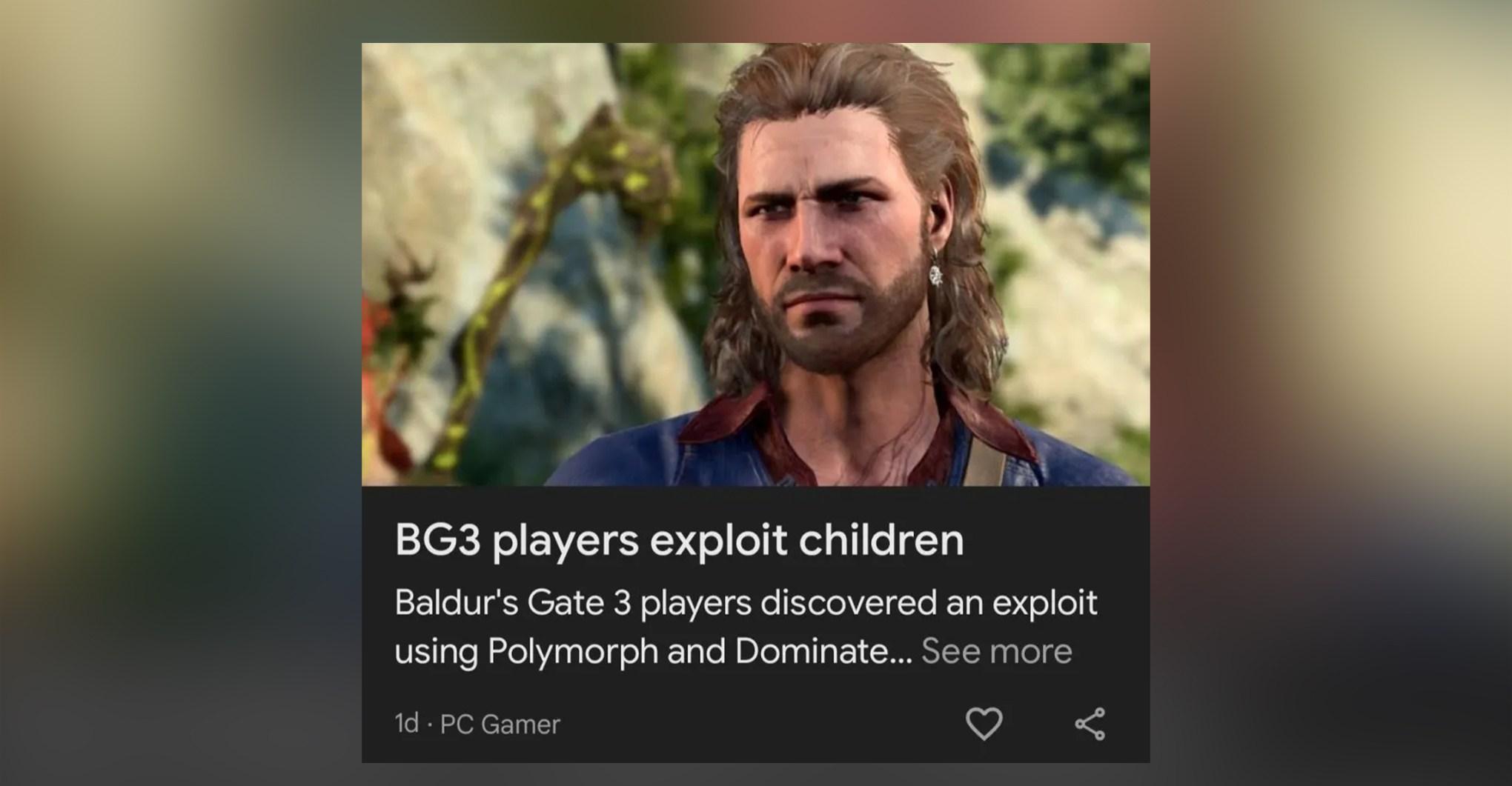
Google is experimentally replacing news headlines with AI clickbait nonsense
- 12 گھنٹے قبل
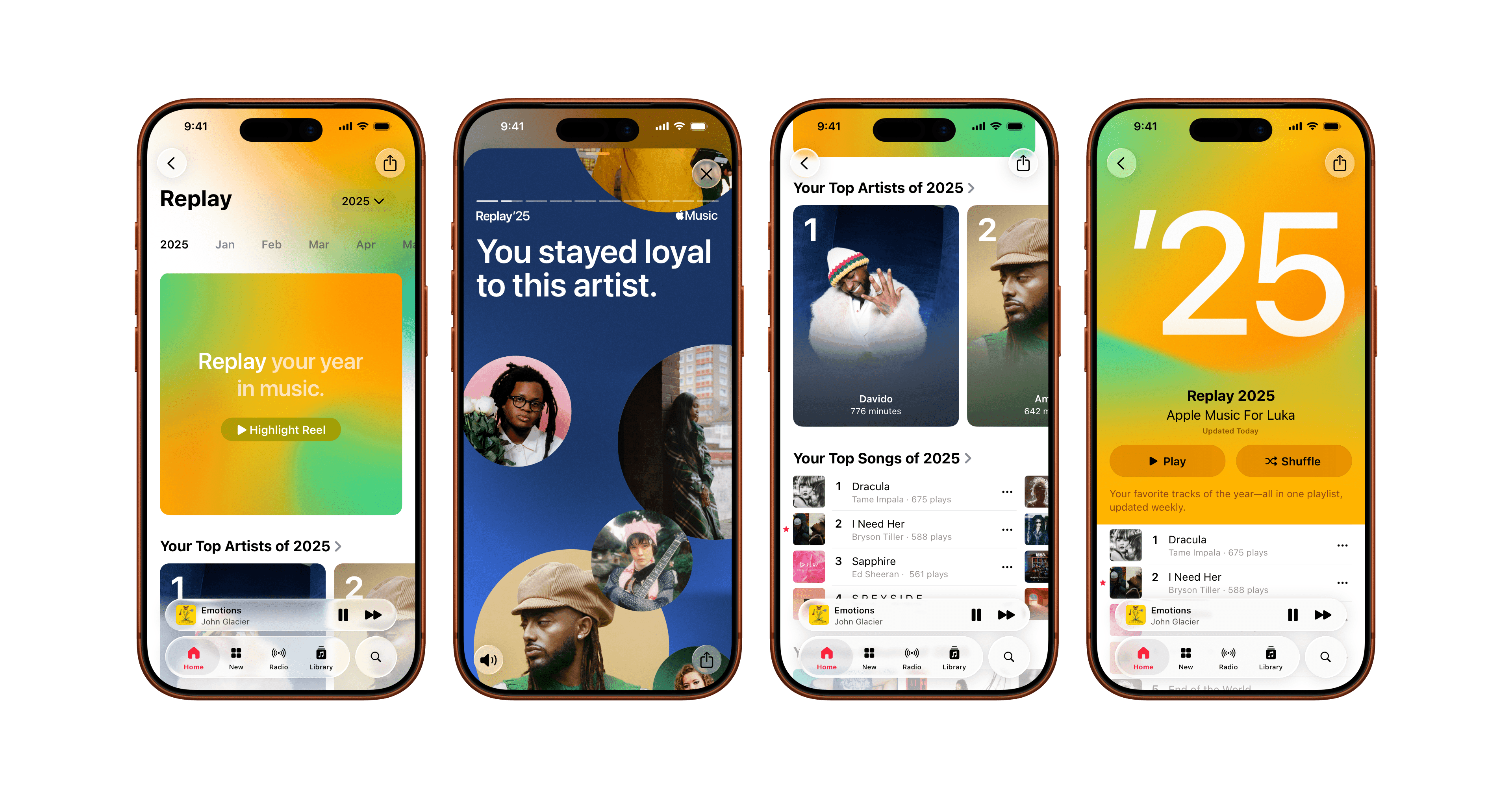
Apple Music Replay 2025 is back with new listening stats
- 12 گھنٹے قبل

We found 25 great laptop deals you can still grab for Cyber Monday
- 3 گھنٹے قبل

The end of fur just got a lot closer
- 10 گھنٹے قبل

Ray-Ban’s Meta smart glasses are even cheaper than they were on Black Friday
- 3 گھنٹے قبل

Some of our favorite Cyber Monday deals are still kicking
- 12 گھنٹے قبل
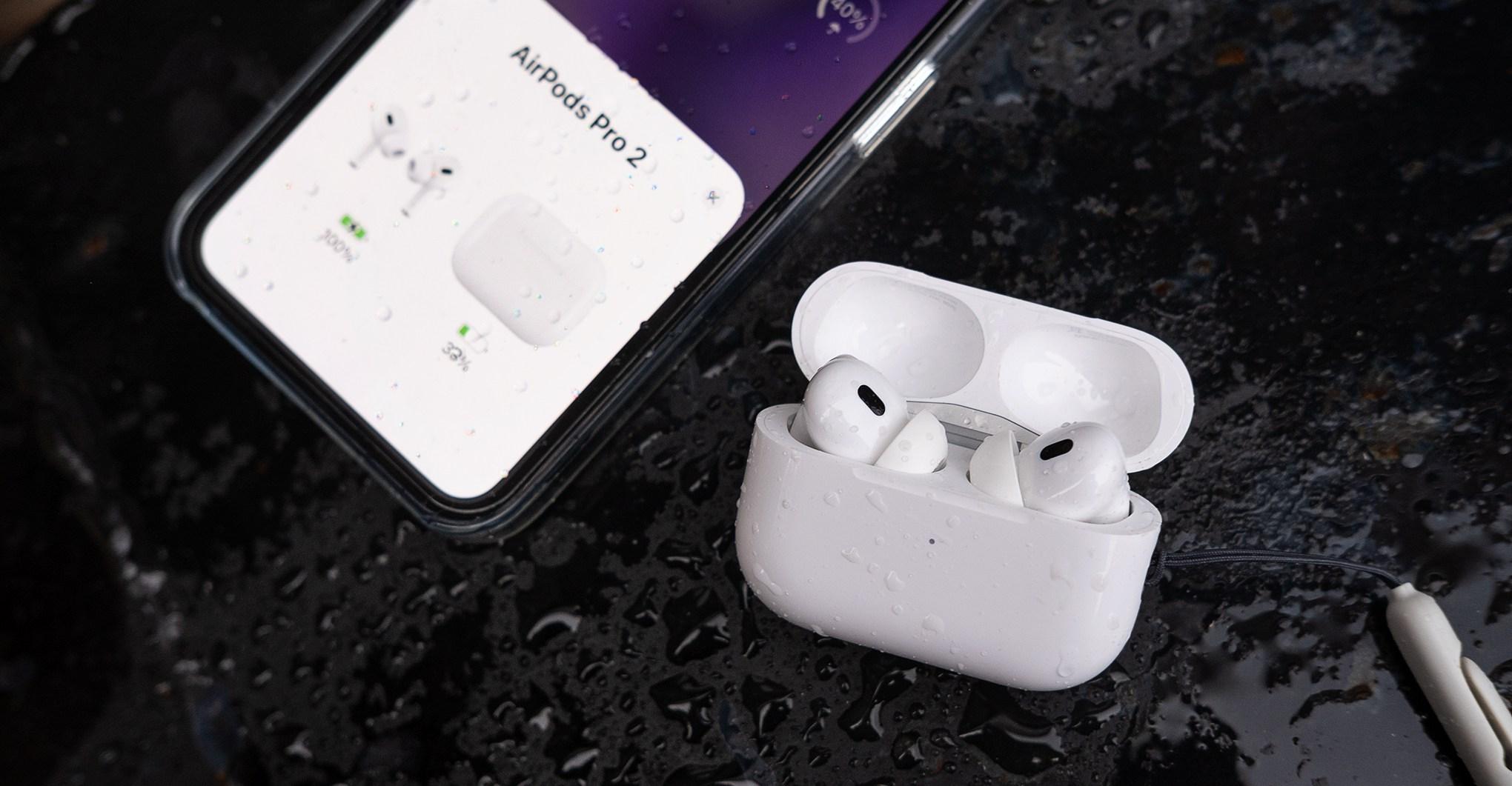
The still-great AirPods Pro 2 are $85 cheaper than the latest model for Cyber Monday
- 3 گھنٹے قبل
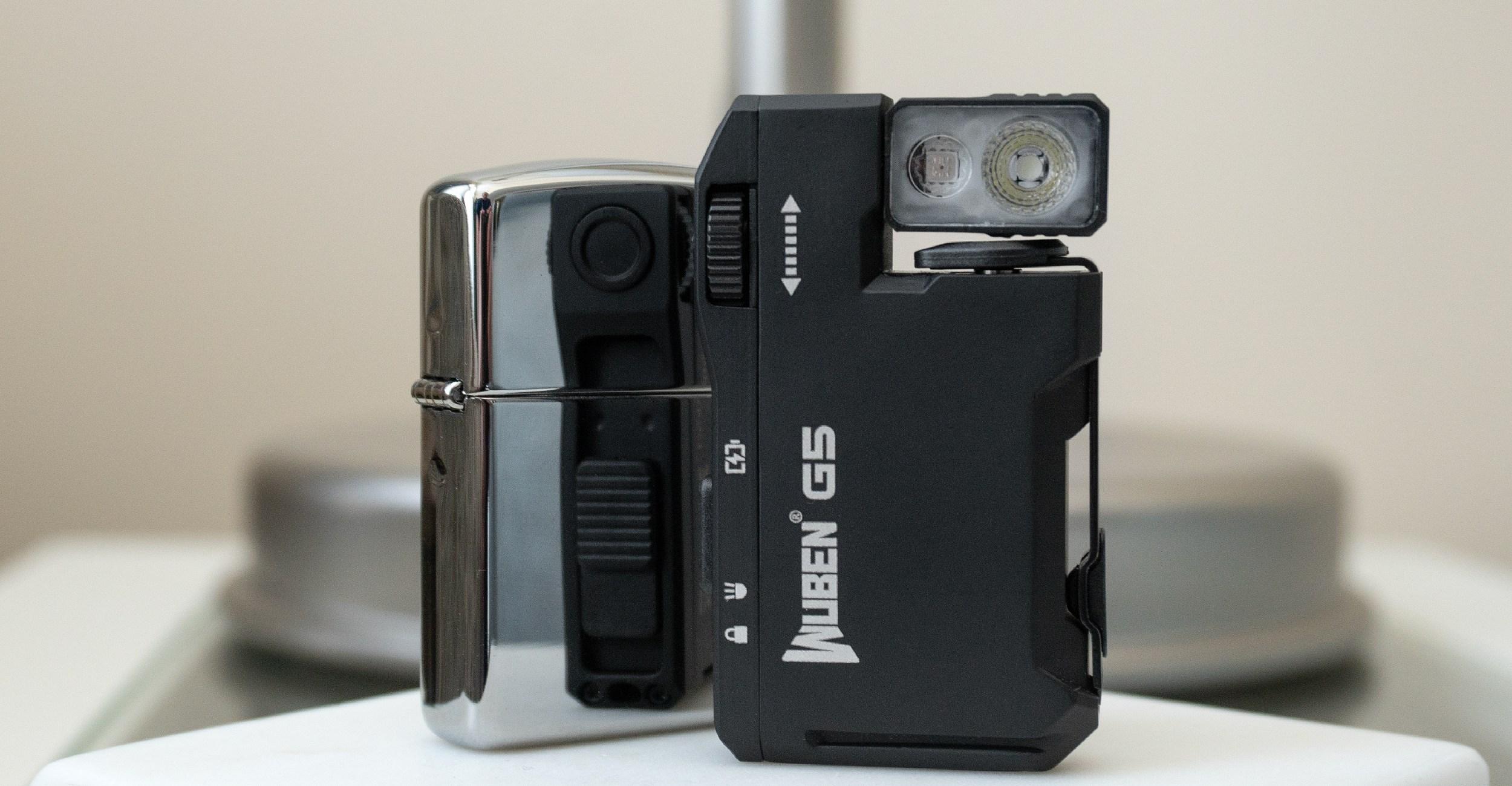
The best thing I bought this year: a Zippo-sized rechargeable flashlight
- 12 گھنٹے قبل


